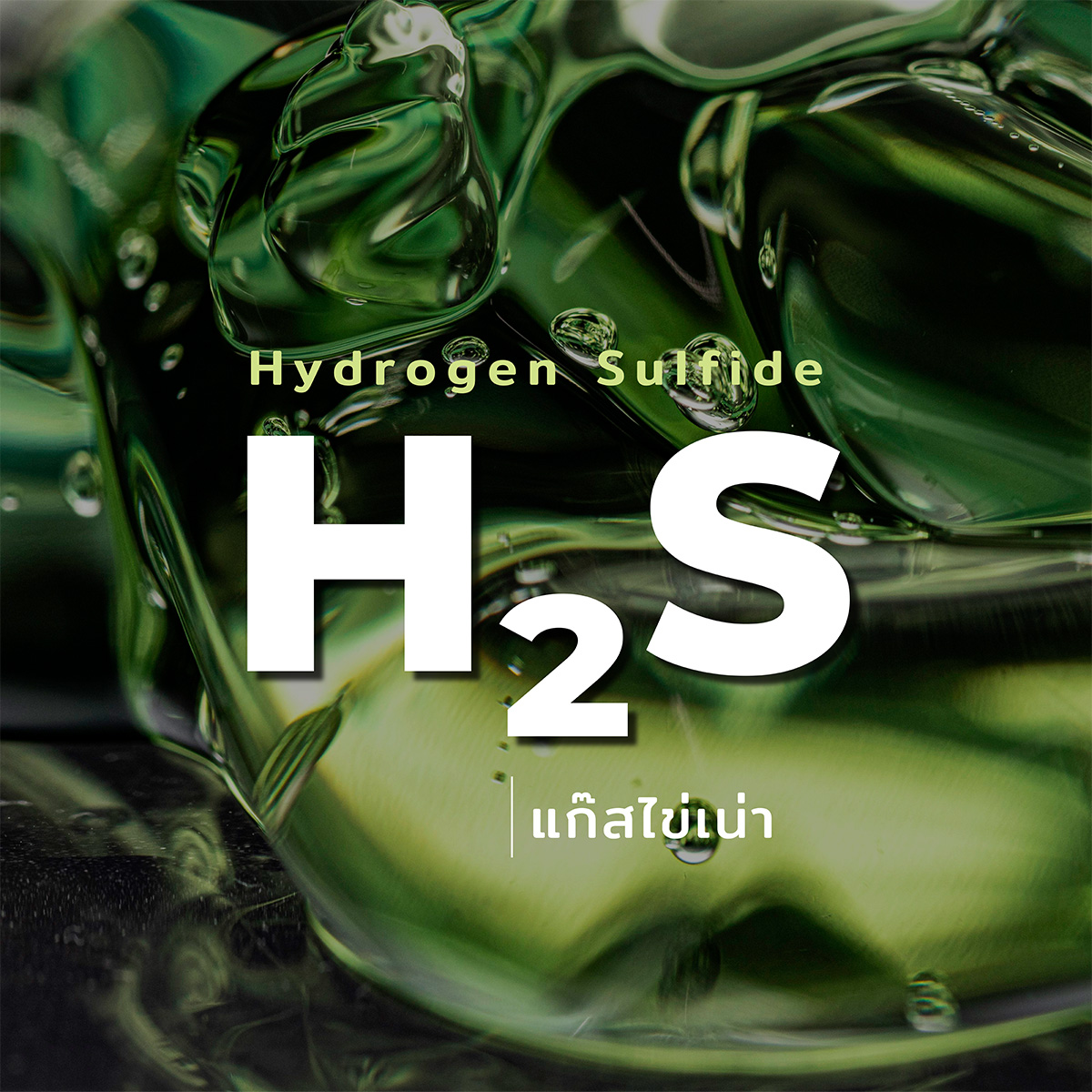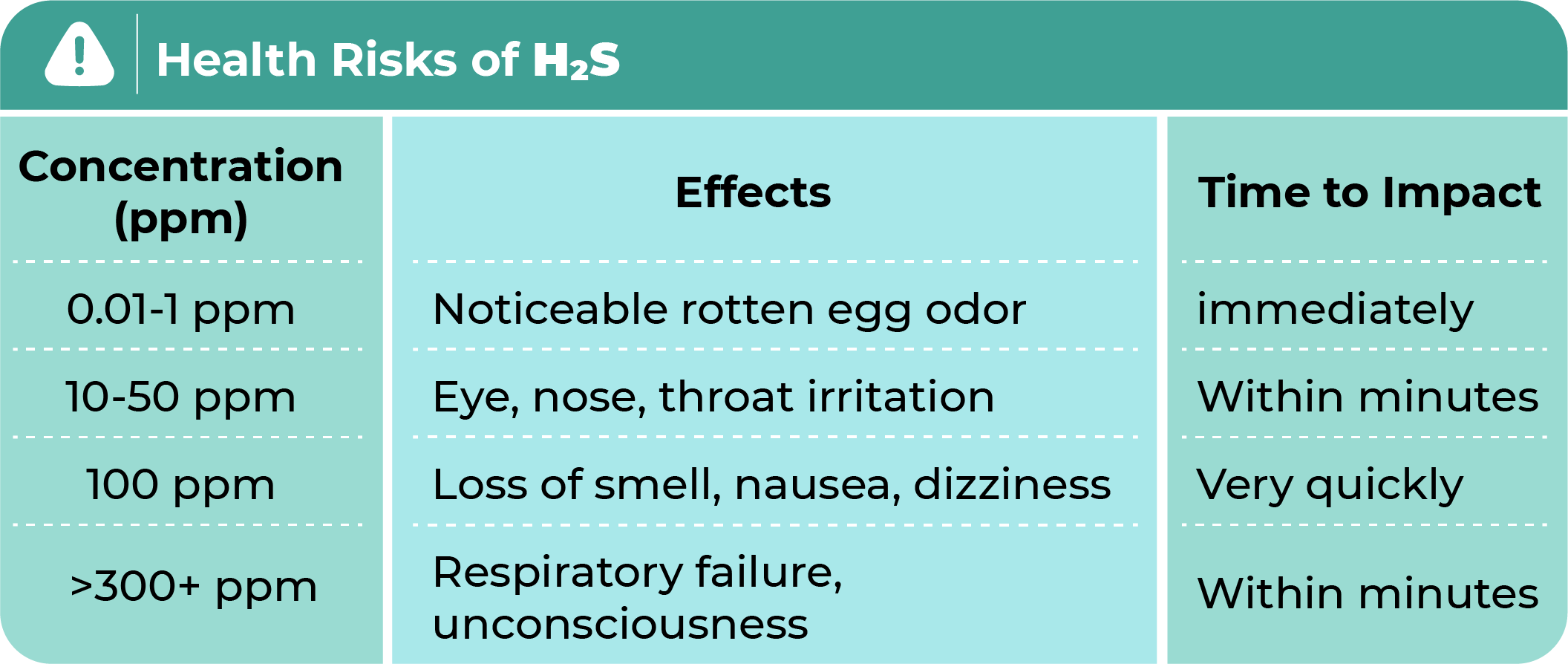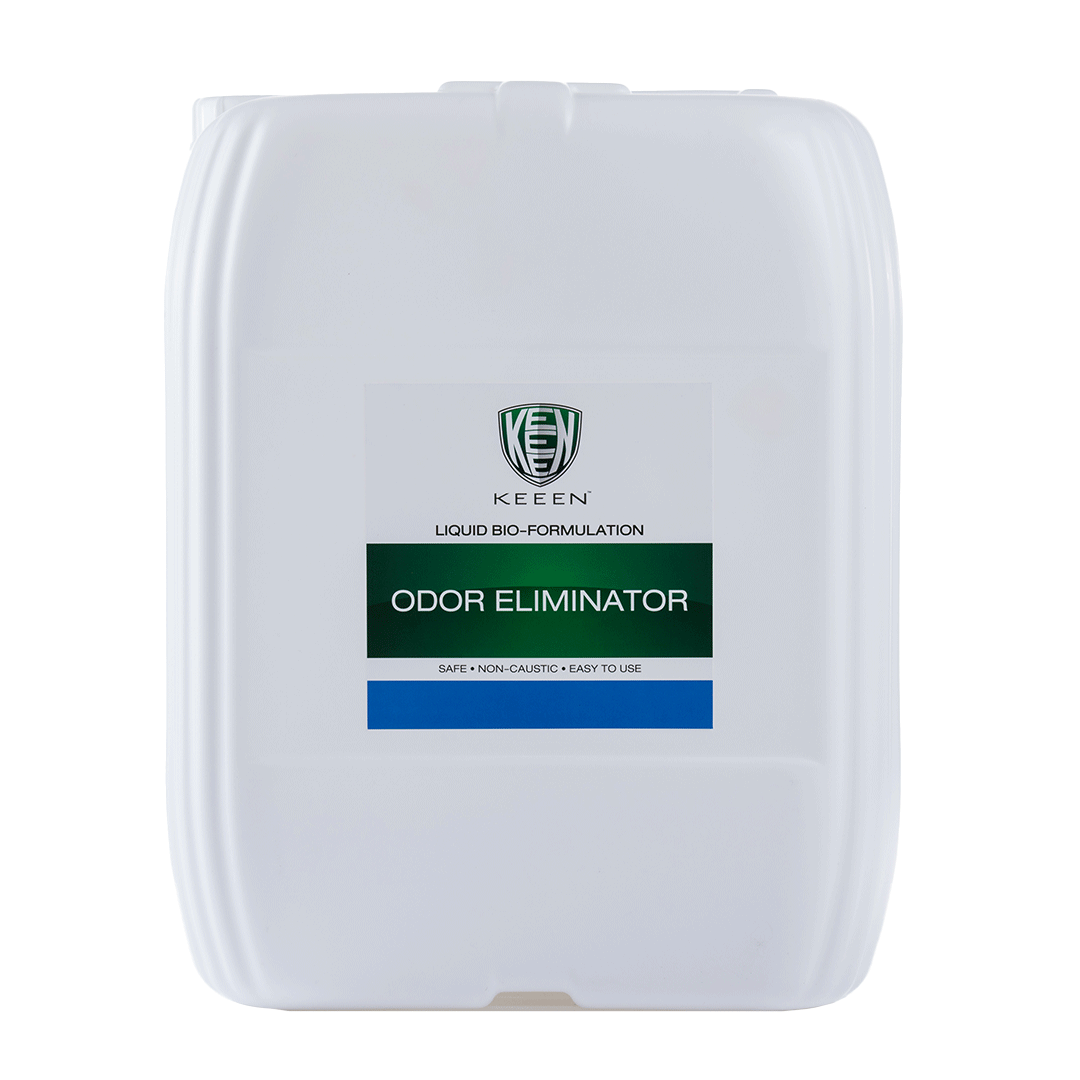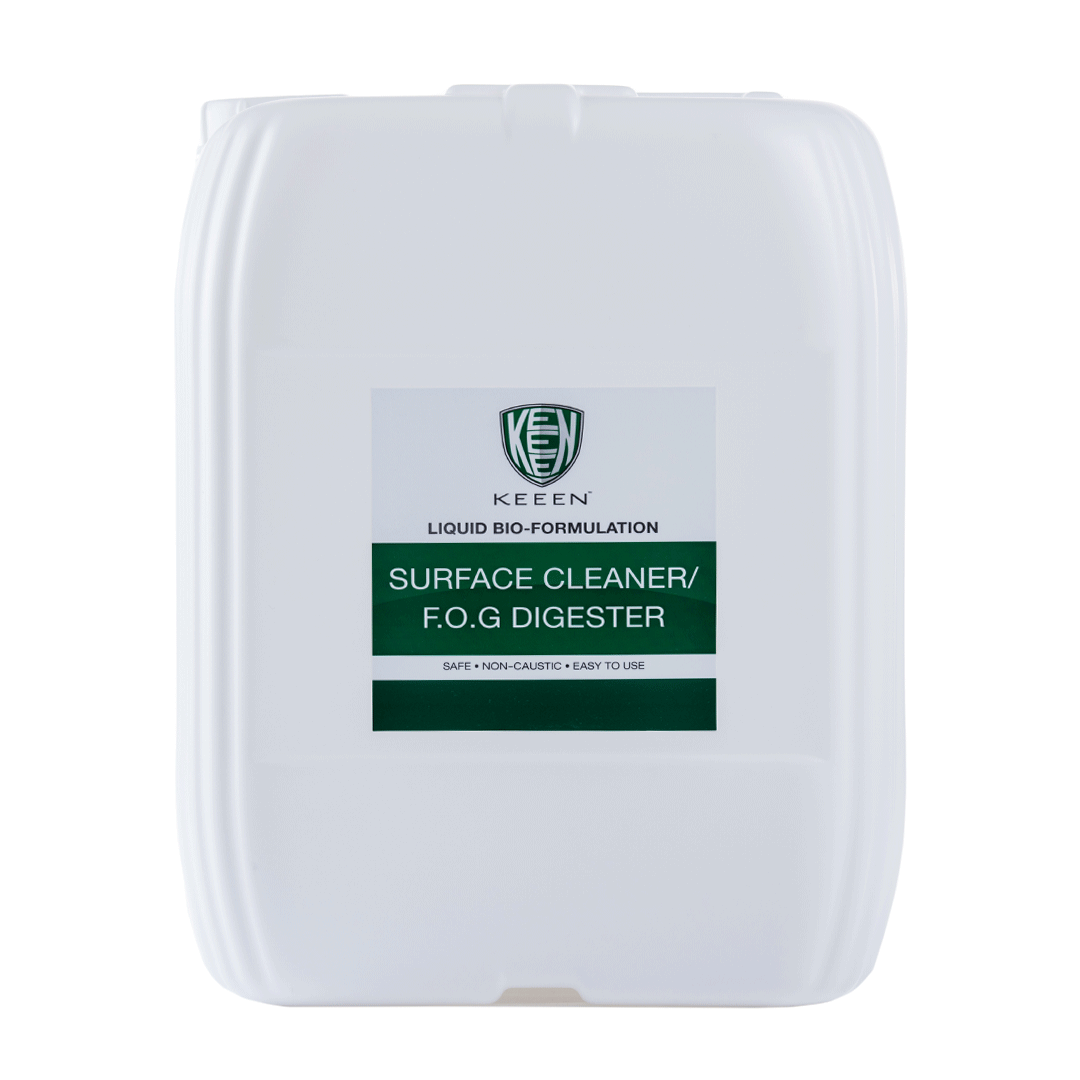Posted on August 8, 2025 by Keeen
🧪 The Dangers of Hydrogen Sulfide (H₂S) and a Sustainable Solution

🔍 What is Hydrogen Sulfide (H₂S)? It’s commonly referred to as the “rotten egg smell,” is a colorless gas known for its strong, unpleasant odor even at very low concentrations—detectable from as low as 0.01 ppm.
⚗️ Chemical Properties are Chemical formula: H₂S, Soluble in water (wastewater can trap a portion of H₂S), Heavier than air, thus tends to accumulate in low-lying, poorly ventilated areas
🧫 Scientific Cause of H₂S Formation is primarily produced through anaerobic decomposition (absence of oxygen) of organic matter containing sulfur, such as Food waste, Proteins from meat or seafood, Animal fats or vegetable oils, Decaying plants and organic sludge
A specific group of microorganisms called Sulfate-Reducing Bacteria (SRB) use sulfate (SO₄²⁻) as an energy source and release H₂S as a by-product.
Common high-risk areas like Grease traps, Wastewater treatment tanks, Central kitchens or food factories with accumulated grease, Poorly maintained drainage systems,

Warning: At high concentrations, olfactory fatigue can occur — the body loses the ability to detect H₂S smell, creating hidden danger. H₂S cannot be reliably detected by human senses; gas detectors are required for safe monitoring.
🧪 Chemical Treatment for H₂S (Conventional Method)
Many businesses and facilities use chemical-based solutions to control H₂S. Common approaches include:
- Oxidizing Agents
- Sodium Hypochlorite (NaOCl) – liquid chlorine
- Hydrogen Peroxide (H₂O₂)
- Potassium Permanganate (KMnO₄)
These work by chemically converting H₂S into odorless sulfate (SO₄²⁻)
- Adsorbent Materials
- Activated Carbon
- Zeolite and other porous media
These physically trap H₂S on the surface of the material
❌ Limitations of chemical methods:
- Require frequent replenishment, leading to high ongoing costs
- Toxicity concerns if dosage is not carefully controlled
- Do not address the root cause of H₂S formation
- Some chemicals may cause corrosion to pipes and infrastructure
- Generate chemical sludge or hazardous waste requiring disposal
🌱 KEEEN BioOrganicTech: A Sustainable Approach to H₂S Management
KEEEN offers a long-term solution using BioOrganicTech, an innovative microbial disintegration formula that works with nature rather than against it.
✔️ Mechanism of Action by Utilizes patented, selective microbial strains to biologically degrade the organic matter that fuels H₂S production — such as fats, proteins, and food waste, reduces substrate availability for SRB, thereby inhibiting their activity, creates an aerobic microenvironment to shift the microbial balance away from SRB
✔️ Advantages of KEEEN’s Bio-Based Products are No harsh chemicals involved, non-corrosive, safe for pipelines and infrastructure, user-friendly, does not require heavy PPE, biodegradable and environmentally safe, suitable for use in grease traps, wastewater tanks, drainpipes, and other odor-prone areas
✅ A Safer and More Sustainable Alternative
Controlling H₂S should not rely on short-term odor masking or chemical suppression alone.
KEEEN’s BioOrganicTech solution goes beyond symptom treatment by addressing the root cause of H₂S formation, offering a safer, cost-effective, and environmentally responsible alternative.
Whether you’re managing a commercial kitchen, food factory, or wastewater facility — KEEEN empowers you to create a cleaner, safer, and more sustainable environment.






